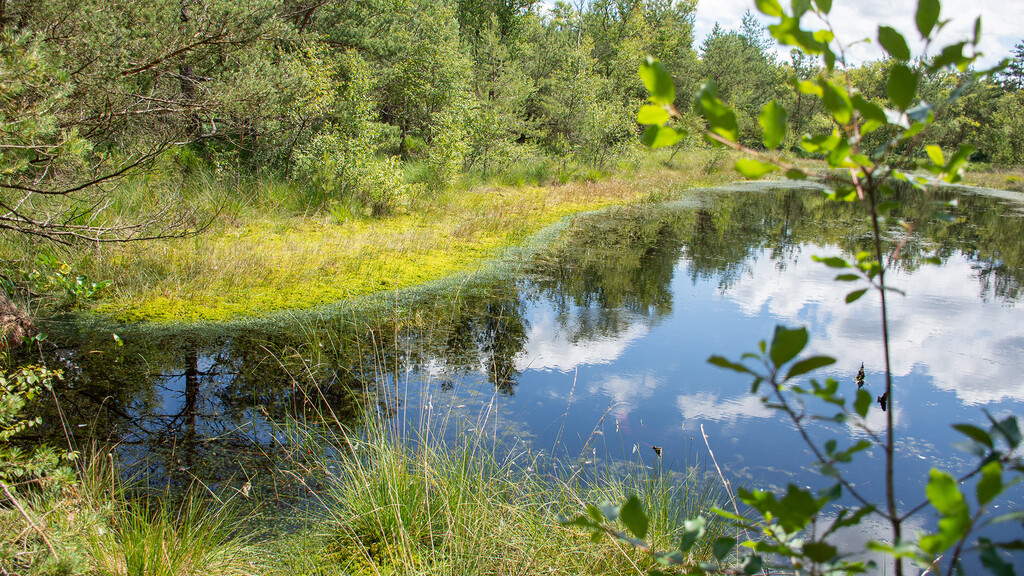

For centuries, moor peat has been cut and the moors have been destroyed. Near Bremen, Germany, some small pieces of moorland, like the Hamberger Moor, have survived. Those are home for rare plants and animals. Even the highly protected grey crane is present here. Naturefund wants to buy at lease 50.000m² land in the Hamberger moor and protect it for the future. Get involved! Just €5 allows you to protect a 3m² area for our grey crane and friends!
Start: April 2017
End: August 2018
Hambergen in Lower Saxony, between Bremen and Bremerhaven in the district Osterholz, located between two Geerecken.
Size of the first area in the Hamberger Moor:
28,397 m2
Total goal:
85,000 m²
The owner becomes the NABU Niedersachen.The local groups NABU Hambergen and NABU Osterholz-Scharmbeck will look after and protect the moor together with the nature conservation authority of the district of Osterholz.
Other species in Hamberger Moor:
Because of the lack of limestone in the moor, shell and skeletal species such as fish, shells, snails, woodlice can not exist here.
Unfortunately, the typical species of moorland birds such as the white-sandpiper, golden plover, black grouse and the curlew are scarcely to be found today.
In the forested bog areas, however, there are several non-endangered bird species: fitis, tree pipit, yellowhammer, robin, hawk, titmouse and woodpecker.
Viper
Occurs regularly in degenerate moor areas. In bushes and heathlands she hunts for lizards, frogs and mice. In winter, she sleeps in groups in dried-up turf, which are safe from frost and high tide. They are up to 70 cm long.
It is on the red list of endangered species.
Grass snake
It hunts in waters in fen and moor areas.The males can grow up to 75 cm long.Grass snakes feed mainly on amphibians.
Bog frog
The moor frog is the most acid-resistant frog species and can settle at the transition from low to high moor in ditches, water-filled hand stitches and ponds. The males are blue colored.
He is "strictly protected" according to the Habitats Directive.
Crane
The large bodies of water in the Teufelsmoor are again being used by the crane for several years as a resting and feeding place. In the meantime, thousands of cranes can be seen every year in the late summer / autumn on their passage through the Teufelsmoor. The NABU Hambergen offers annually very well visited excursions for crane observation. The approach of large groups at dusk is spectacular and the typical calls of the big birds are unforgettable.
Individual pairs of cranes have now settled as breeding pairs. Also in the Hamberger moor brood pairs are now suspected.
Bog bluebell
The butterfly can be observed in the district only on two adjacent areas: In Hamberger moor and in Niedersandhausener moor. He is thus the exclusive species in the Hamberger Moor. Males and females are purple / purple-blue colored.
They fly from June to August. The caterpillars feed on leaves z. B. the moss, intoxication, - blueberry.
He is on the red list of endangered species.
Dranon-fly
Species adapted to the biotope live in the moor. Heat-loving species or their larvae use the strong heating effect of the moor waters. The dragonflies need the peat moss pad and vertical plants like cotton grass and sedges on the edge of the water.
The Hochmoor-Mosaikjungfer belongs with spans of 9-10 cm to the largest dragonfly species in Germany. They are active from July to September. The female pricks the eggs into the peat moss. It is on the red list of endangered species.
Special plant species in Hamberger Moor:
Cotton gras (Eriophorum vaginatum)
Cottongrass species stand out because of their white fruit hairs, which tumble like cotton balls in the wind.The fruit hairs facilitate the spreading of the seeds by the wind.There are special species that grow on bulten or in Schlenken.
Sundew (Drosera)
The middle sundew grows on damp surfaces often at the footprints of the wild.He can temporarily grow underwater.The round-leaved sundew grows on rather dry surfaces.Through the animal food the sundew improves its nutrient balance.He is under conservation.
Gagelstrauch (Myrica gale)
Originally it is found in the edge area of the moor.There are plants of both sexes.The Gagelstrauch gives the bog the typical smell and blooms from April to May.He was placed between the laundry by the bog-dwellers, because the smell deters woolly moths.It was also used as a hop substitute for beer production.The beer "Gageleer" in Belgium is still produced today with gagelstrauch and offered there.As Moore are becoming increasingly rare, the Gagelstrauch is also on the red list of endangered plant species.